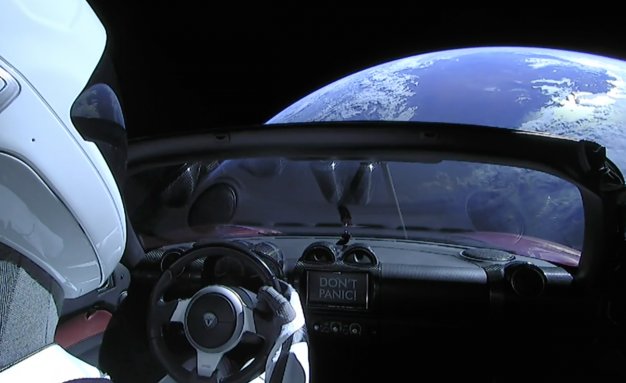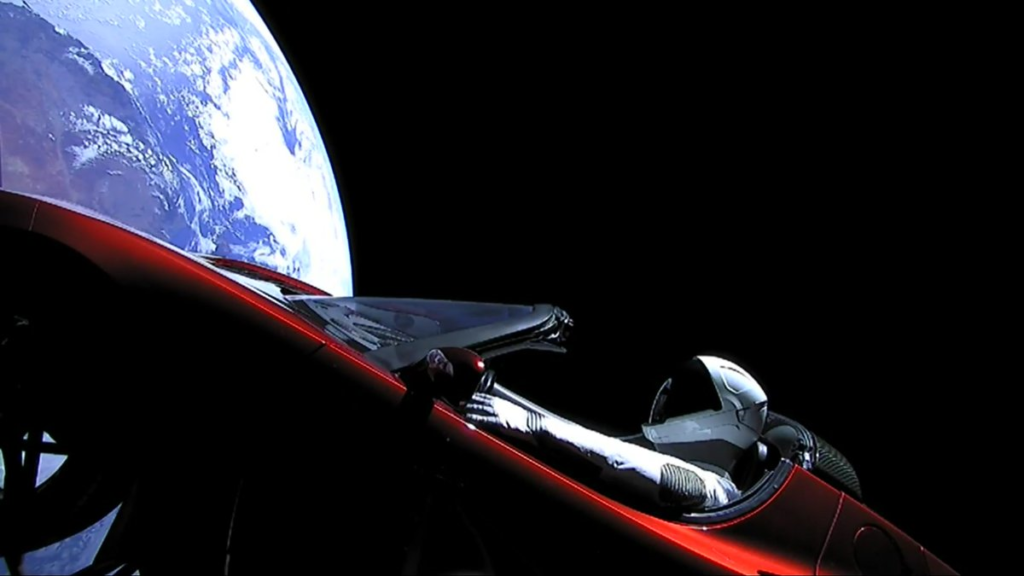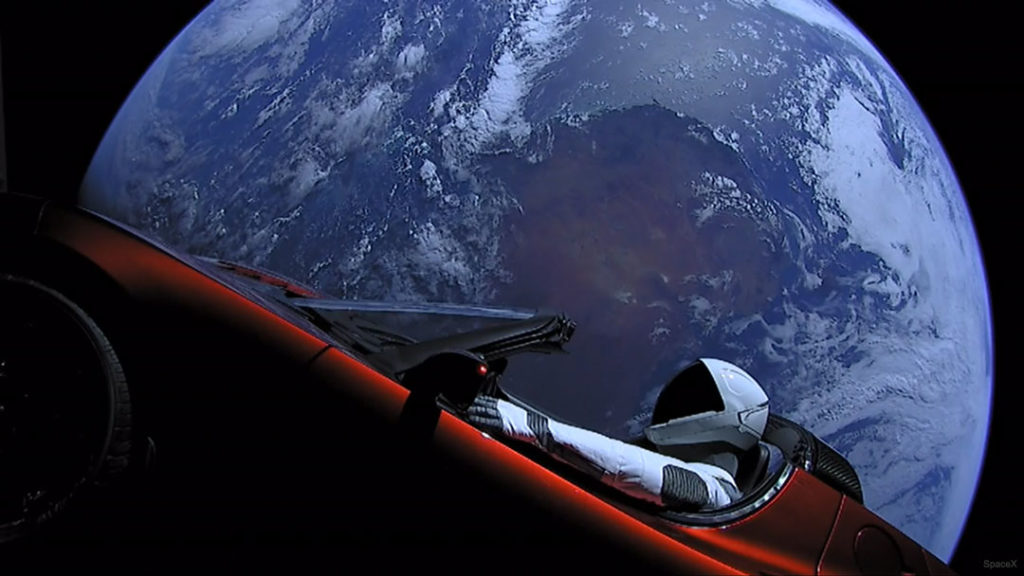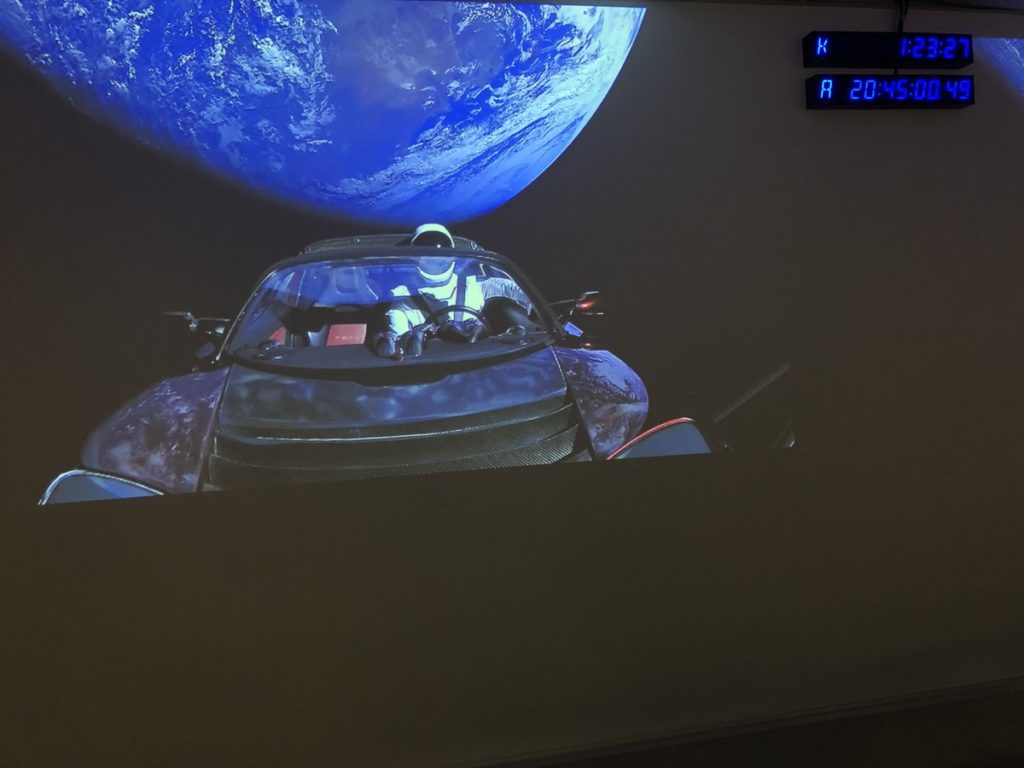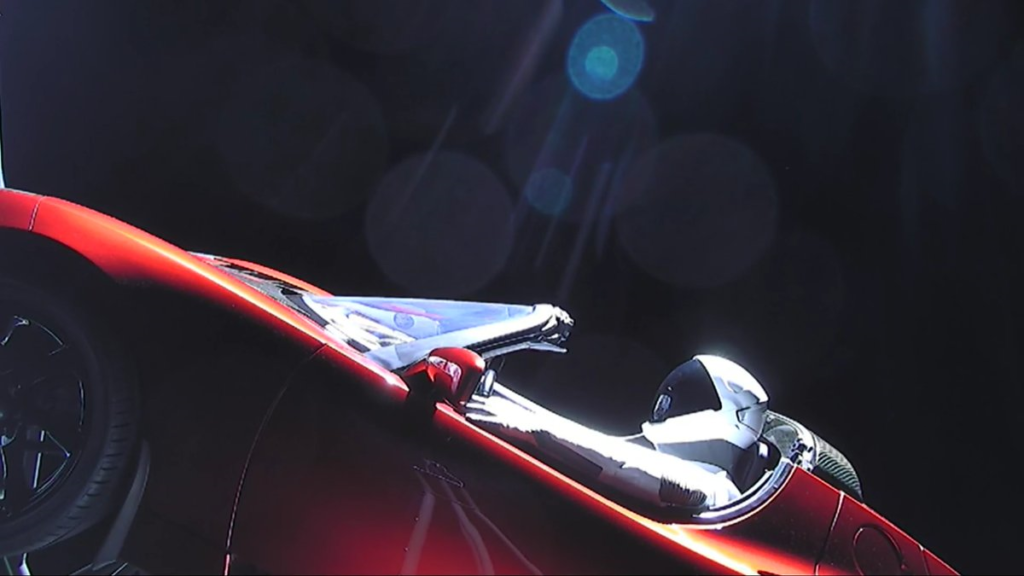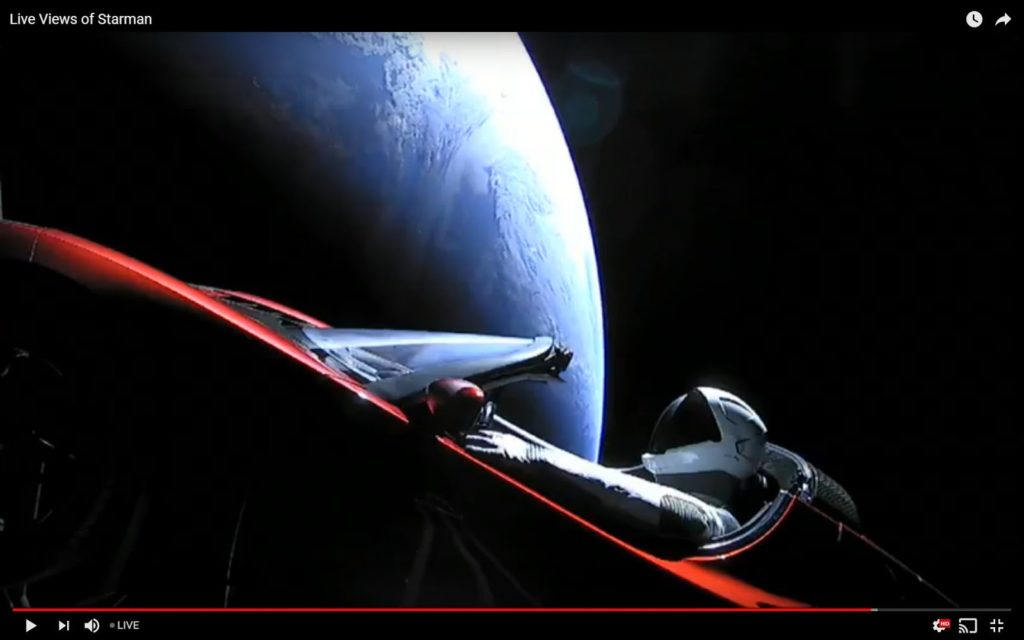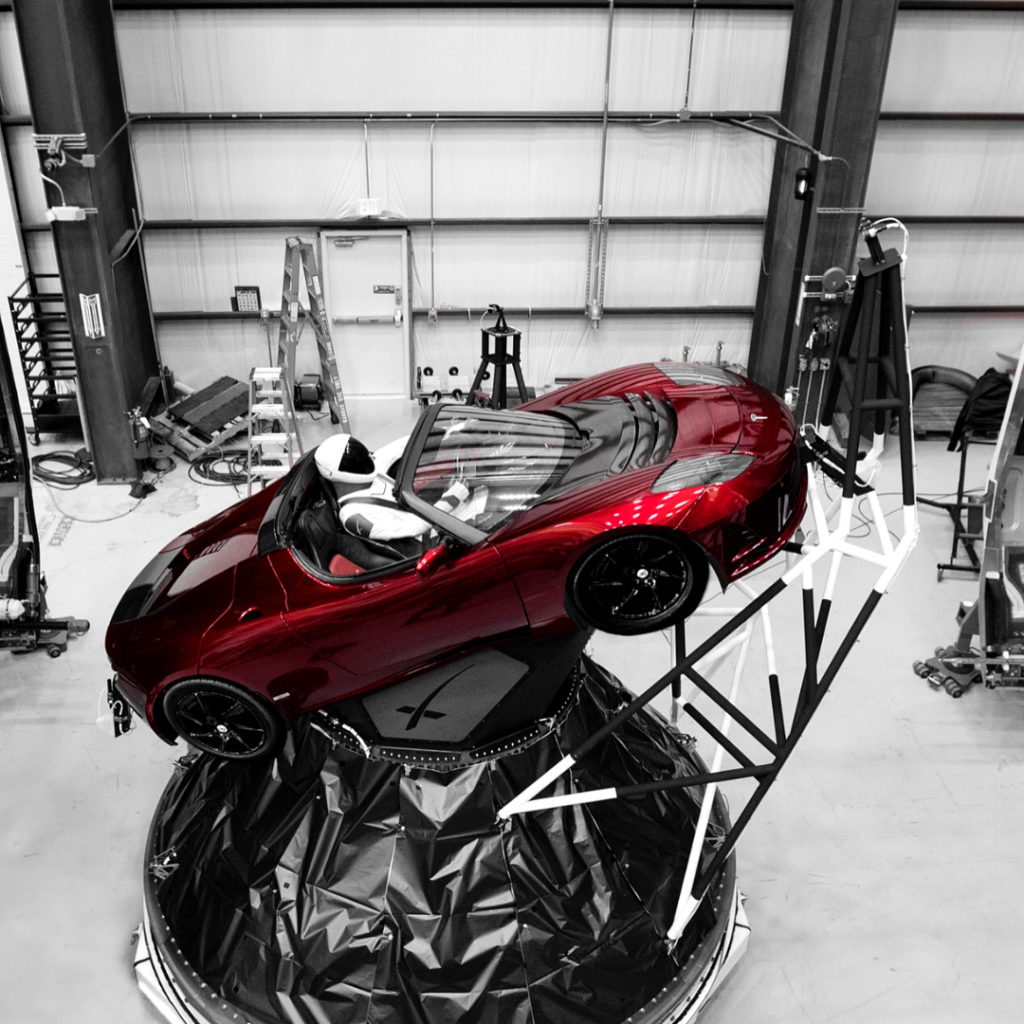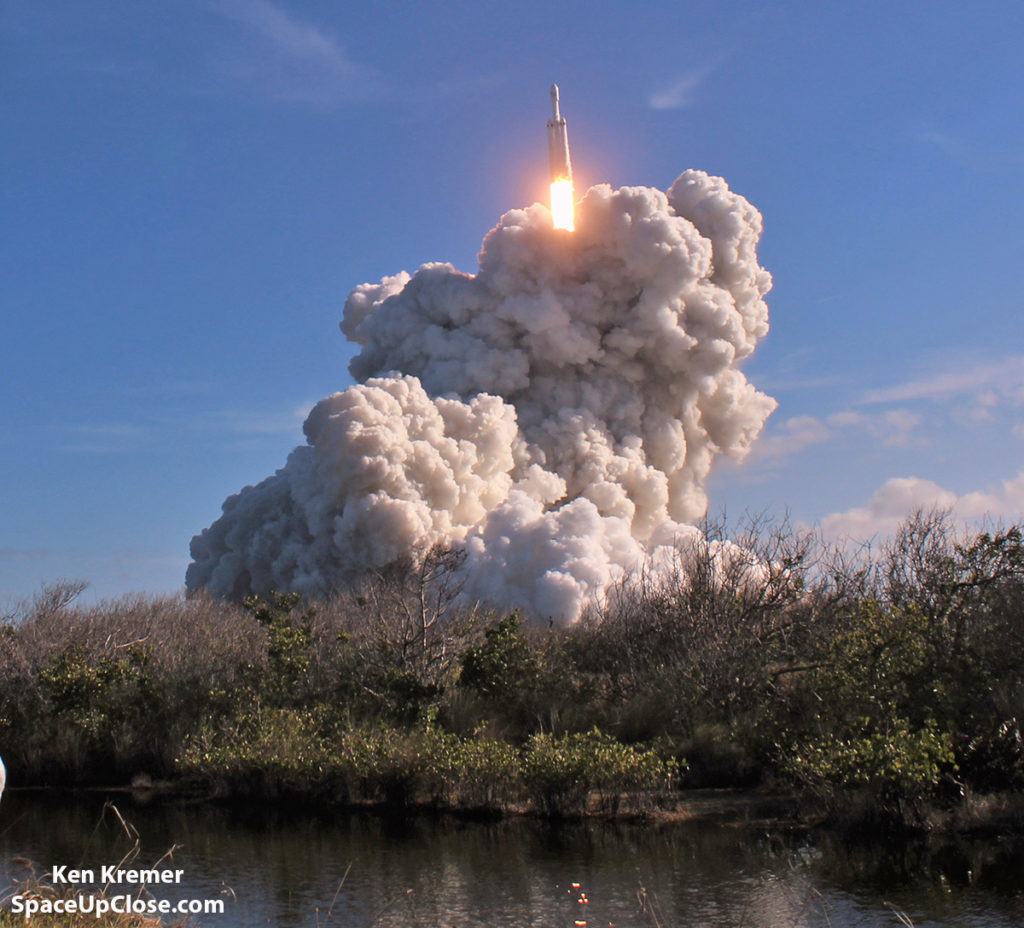— SpaceUpClose.com — 8 Feb 2018
personal Tesla Roadster sports car, the space suited mannequin nicknamed ‘Starman’
departed Earth on an interplanetary journey to Mars orbit and beyond, while snapping
a stunning over the shoulders last look backdropped by our Home Planet on Feb.
8 – see above.
released the last photo taken by the rear view looking camera mounted on the cherry
red Tesla on Feb. 8, two days after the Tesla was hurled to orbit outbound for
the Red Planet by the first test flight of his firms new Falcon Heavy rocket.
pic of Starman in Roadster on its journey to Mars orbit and then the Asteroid
Belt,” Musk tweeted along with the photo of Earth.
inaugural test flight of the triple stick Falcon Heavy rocket lifted off in
spectacular fashion from historic pad 39A at NASA’s
Kennedy Space Center in Florida, Tuesday afternoon at 3:45 p.m. EST
(2045 GMT) on Feb. 6, 2018.
The Falcon Heavy is now the world’s most powerful currently
operational rocket with twice the lifting ability of the next most powerful
rocket- the Delta IV Heavy from United Launch Alliance.
payload to low Earth orbit.
Roadster itself had a mass of about 2,760 pounds (1,250 kilograms), well within
the capability of the Falcon Heavy. Although it served as a mass simulator, it
generated astronomical amounts of positive publicity worldwide for SpaceX, Musk
and his Tesla sports cars.
Starman’ was launched
as the payload encapsulated inside the nose cone atop the 23 story tall Falcon
Heavy on the journey to Mars and Beyond to the tune of David Bowie’s hit song ‘Space
Oddity.
The dummy astronaut nicknamed ‘Starman in the Red Roadster’ from Musk
is wearing a SpaceX Crew Dragon astronaut spacesuit, and buckled up sitting in
the driver’s seat for the long journey to Mars. Starman is another Bowie hit
song
The Tesla Roadster was initially hurled to Earth orbit after
the 27 first stage Merlin 1D first stage engines ignited to generate almost 5
million pounds of liftoff thrust fueled by liquid oxygen and RP-1 kerosene
propellants.
and 28 minutes to deliver the Tesla to an
elliptical orbit reaching about 7,000 kilometers (2700 mi) above Earth.
stage a third time that continued to depletion of the on board propellants.
to the Asteroid Belt,” Musk tweeted.
published a trajectory map.
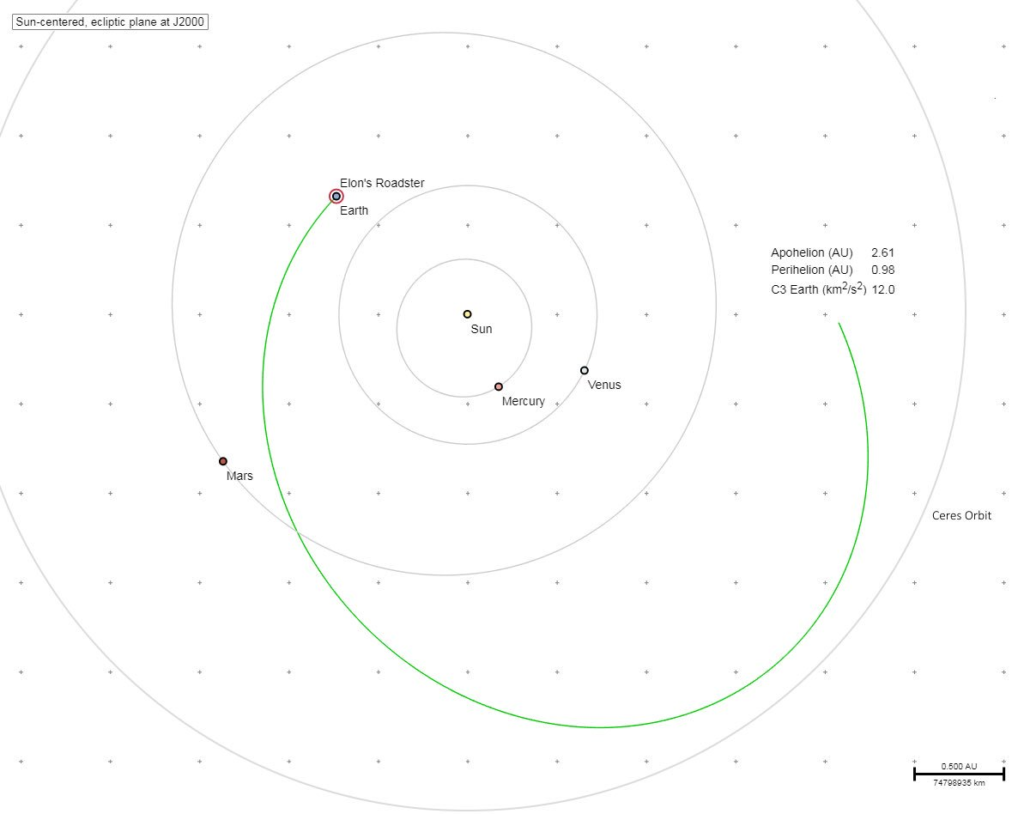 |
|
Trajectory map of
Elon Musk’s Tesla Roadster to Mars and beyond following Feb. 6, 2018 launch on first SpaceX Falcon Heavy. Credit: SpaceX |
mounted around Musk’s Tesla provided breathtaking views of the journey starting
from jettison of the payload fairing, the initial orbit around Earth and
finally the start of the outbound leg on a long looping heliocentric orbit
around the sun.
The dummy Starman was
wearing a genuine spacesuit while seated as the driver in SpaceX billionaire
CEO Elon Musk’s midnight red Tesla sports car which he donated as the
payload for this inaugural demonstration mission for the firm he founded.
was developed for real astronauts who will wear it inside the Crew Dragon
spaceship which SpaceX is building under contract to NASA to ferry astronauts to
Low Earth Orbit and missions to trips to the International Space Station (ISS).
of unforgettable images transmitted from the Tesla.
live video from the Tesla during the climb to Earth orbit and thereafter.
briefing held at the Kennedy Space Center press site Musk said the battery for
the video camera transmission would last about 12 hours.
surviving longer, for roughly 2 days.
here:
And be sure to check
out our growing galleries of additional photos captured of the launch and twin
landings of the side boosters back at Cape Canaveral Air Force Station, Fl some
eight minutes after the Feb. 6 debut blastoff.
the most powerful rocket to launch since NASA’s Space Shuttles were retired in
2011.
pounds of liftoff from the combined thrust of the 27 Merlin 1D first stage
engines, the Falcon Heavy is equivalent to 18 Boeing 747s.
and launch stories.
for Ken’s continuing onsite coverage of Falcon Heavy, ULA and NASA and space mission reports direct
from the Kennedy Space Center and Cape Canaveral Air Force Station, Florida.
Earth and Planetary science and human spaceflight news: www.kenkremer.com –www.spaceupclose.com –
twitter @ken_kremer – ken
at kenkremer.com



